1V / Octave Calibrator
As I'm sure you already know, the MFOS synth like most other analogue synths use the 1V / octave standard. Modules that incorporate circuitry to achieve this relationship need to be calibrated or tuned. To aid this exercise, Ray Wilson of MFOS has published a design for a voltage source that increments in 1V intervals by pressing a push button.
We built the circuit and it worked rather well although we did note a shift in voltage with temperature change. The question is, how accurate does the calibration source need to be? Well, we work on the basis that a calibrator is ideally a factor of 5-10 times better than the accuracy you are trying to achieve. You would be hard pressed to tell by ear if your oscillator was a few Hz out at 1kHz but have two oscillators tracking and you will hear the beat frequency between them change if the two oscillators do not track in the same way. However, even if you have calibrated your oscillators to be 'spot on', they in turn could drift due to temperature changes etc but that is another topic altogether. For now, we are going to focus on producing a stable temperature with a good linearity over the 1-7V range.
Let's say that we wish to calibrate our oscillators to within 0.1% which is 1Hz out at 1kHz, that means we need a calibration source accurate to 0.02 to 0.01% (of range or reading?, see 7th July update below). In order to achieve this from Ray's design, the first we did was replace the zener diode which has a temperature drift of 680ppm/Deg C with a 10V voltage reference chip stable to within 10ppm/Deg C. this sorted out the voltage drift with temperature. Next was the linearity, Ray suggested in his write up to match the R-2R resistors to 0.1%. Well as we stock 0.1% resistors already, we decided to match them to 0.01%.
When we find time, we will put a video up of us calibrating a VCO and you will then be able to see our calibrator in action. The performance of Ray's design with these minor tweaks was brilliant, we can switch from 0V to 7V in 1V intervals with an error of typically 1mV or better.
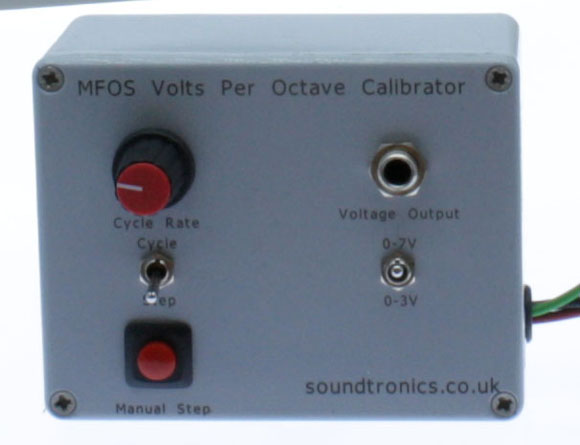
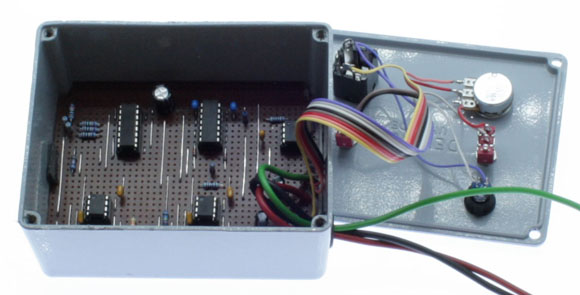
10 Feb 2014
Update 7 July 2014
We have just been calibrating some VCOs and took the opportunity to take some snap shots of the calibrator at each of the voltage steps.
Starting out with the calibrator set to 0V
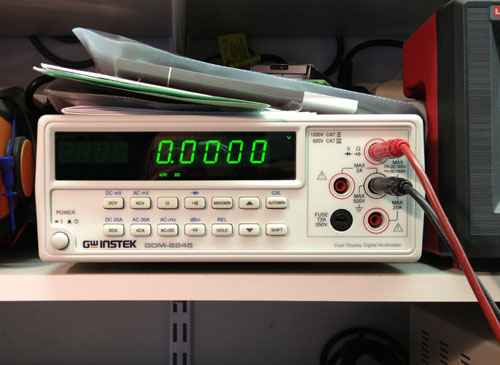
Then 1V
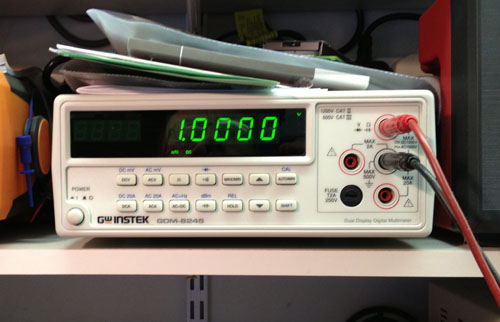
Then 2V
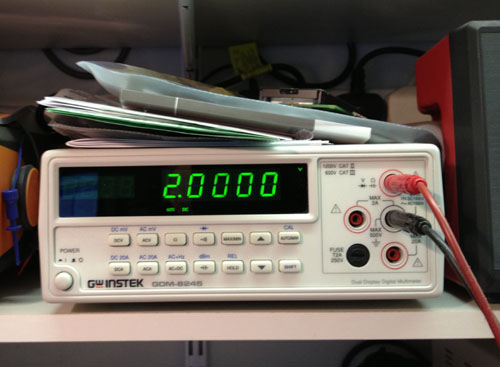
Then 3V
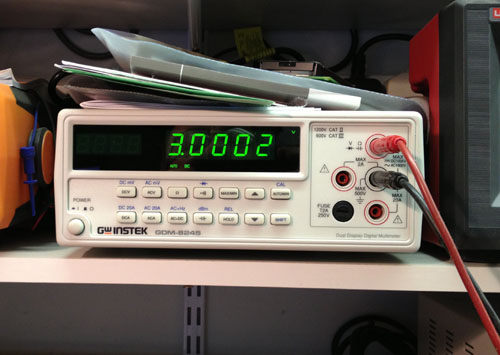
...4V
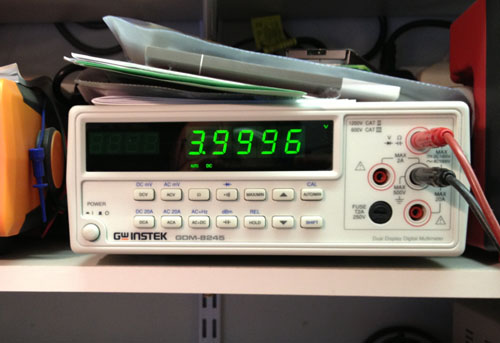
...5V
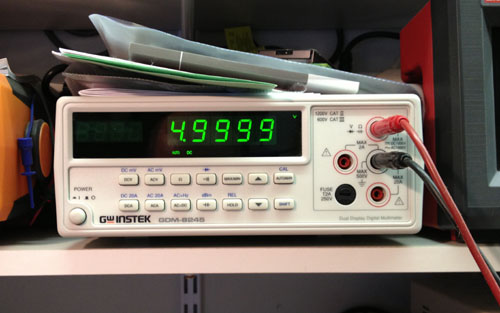
...6V
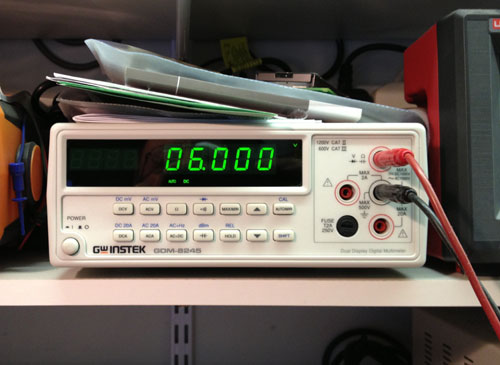
and finally 7V
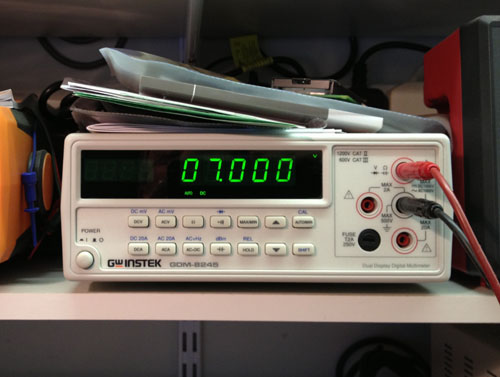
There is of course the level of uncertainty with the accuracy of the digital meter. We do have another meter which has an extra decimal place and under test, both meters tracked each other rather well but as this meter has a much brighter display it makes for better pics.
If we were to quote accuracy based on range or full scale as is common practice by manufacturers, an accuracy of 0.02% would mean that we would be allowed a deviation from the desired value of up to 1.4mV at any of the intermediate voltage steps. So at 1V, we could read 1.0014V which is 0.14% of reading. We wanted a tight accuracy at every step so 0.02% of reading allows for these tolerances:
0V, 0 error
1V, +/-0.2mV error
2V, +/-0.4mV error
3V, +/-0.6mV error
4V, +/-0.8mV error
5V, +/-1.0mV error
6V, +/- 1.2mV error
7V, +/- 1.4mV error
We look to be well within our objective of being within 0.02% of reading, check out our VCO page where we use the calibrator to check out the VCO tracking.
There are no products in this section
